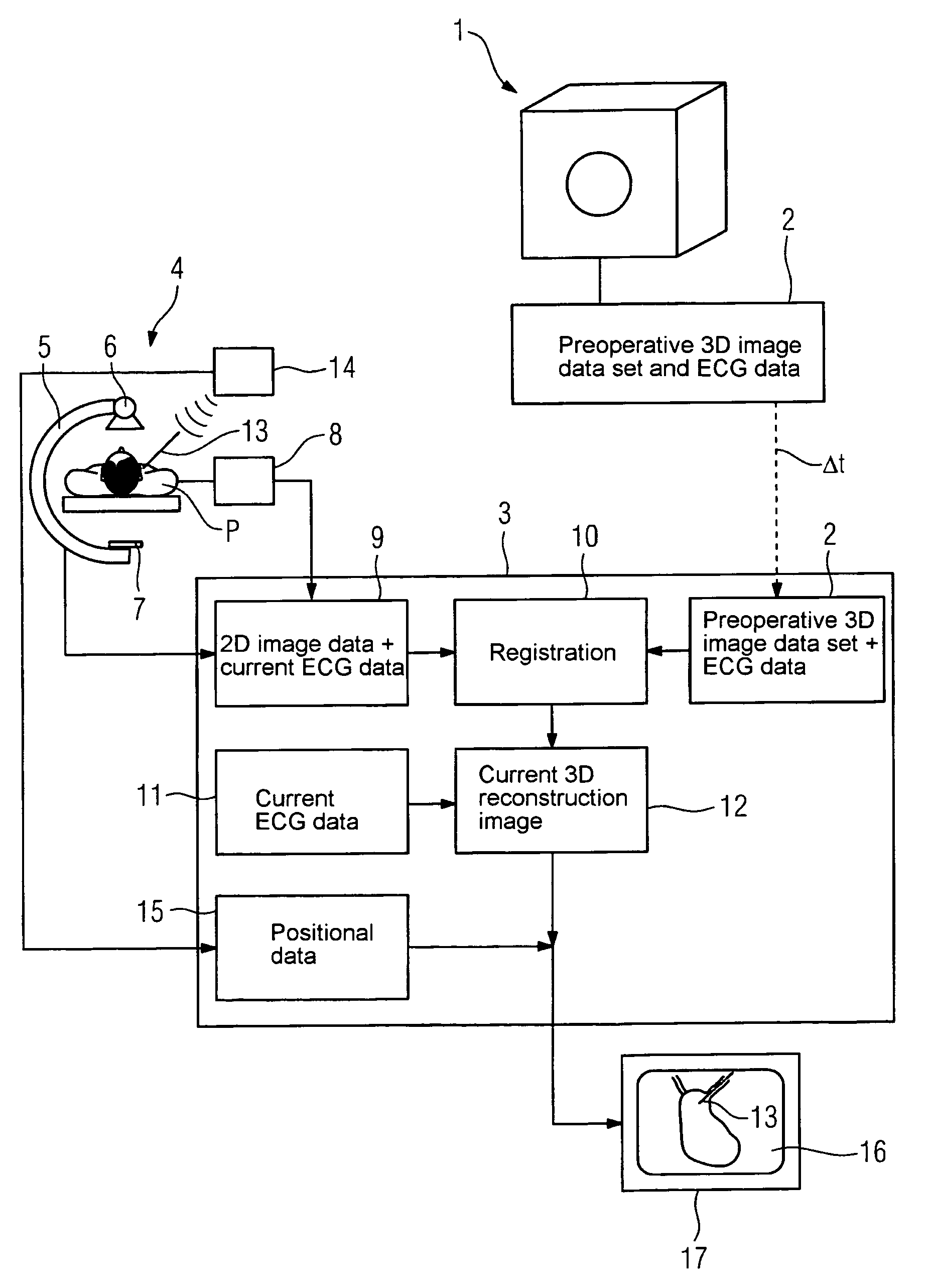Method for medical imaging
a medical imaging and image technology, applied in the field of medical imaging, can solve the problems of difficult navigation using these 2d images, high patient stress, and relatively high continuous radiation image recording during intervention
- Summary
- Abstract
- Description
- Claims
- Application Information
AI Technical Summary
Benefits of technology
Problems solved by technology
Method used
Image
Examples
Embodiment Construction
[0019]The drawing on the one hand shows a first mode of examination 1, a magnetic resonance imaging machine in the example illustrated, which is used for recording a preoperative 3D image data set along with the associated ECG data which are derived from an acquisition unit not shown in detail, which is represented in the field labeled 2.
[0020]This preoperative 3D image data set and the associated ECG data are passed at some later point in time (Δt) to a control and processing unit 3 of a medical examination device 4 according to the invention, here taking the form of a C-arm X-ray device 5 where they are stored. The C-arm X-ray device 5 comprises a radiation source 6 and a radiation detector 7 in the known manner, which is used for recording a 2D fluoroscopic image. This image data is likewise passed to the control unit 3. The ECG is acquired in parallel to the 2D image recording by way of an ECG acquisition unit 8. The ECG data is then associated with the 2D image data or rather t...
PUM
 Login to View More
Login to View More Abstract
Description
Claims
Application Information
 Login to View More
Login to View More - R&D
- Intellectual Property
- Life Sciences
- Materials
- Tech Scout
- Unparalleled Data Quality
- Higher Quality Content
- 60% Fewer Hallucinations
Browse by: Latest US Patents, China's latest patents, Technical Efficacy Thesaurus, Application Domain, Technology Topic, Popular Technical Reports.
© 2025 PatSnap. All rights reserved.Legal|Privacy policy|Modern Slavery Act Transparency Statement|Sitemap|About US| Contact US: help@patsnap.com


